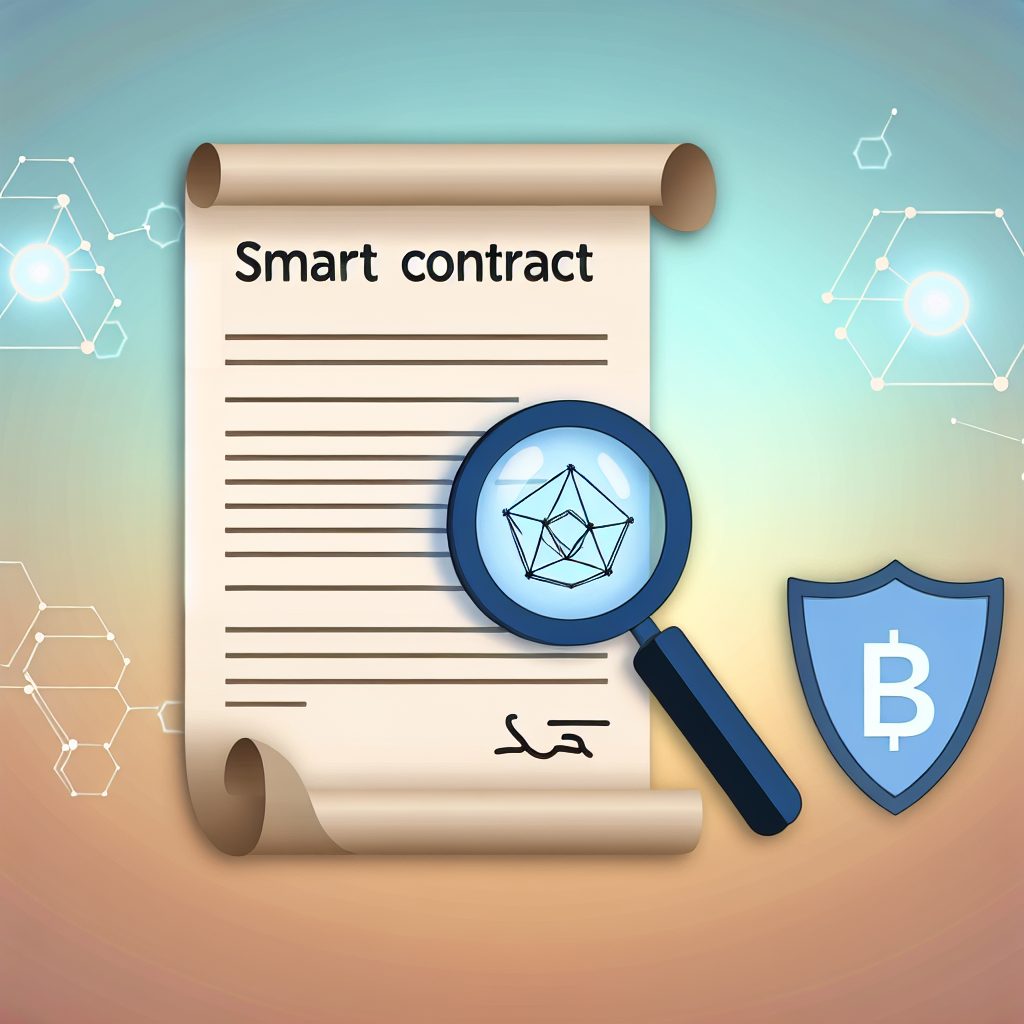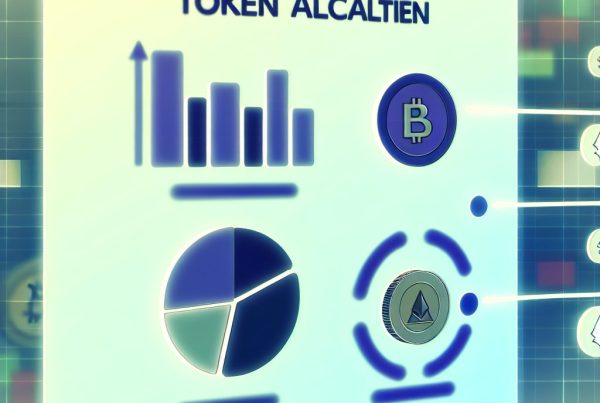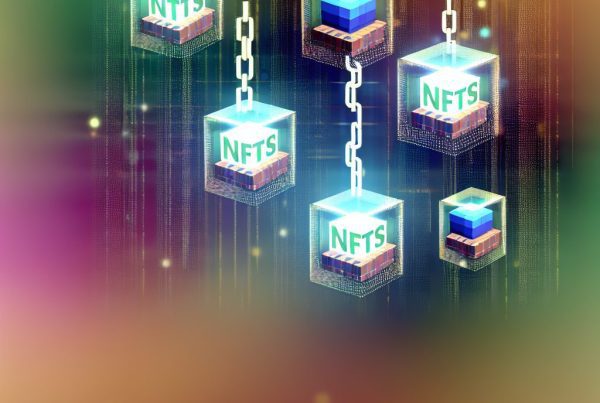How to Check Smart Contract Safety
As the cryptocurrency industry continues to evolve, the use of smart contracts has become increasingly prevalent. These self-executing contracts with the terms of the agreement directly written into code are revolutionizing various sectors, from finance to supply chain management. However, with the rise of smart contracts comes the critical need to ensure their safety and security. This article delves into the essential steps and best practices for checking the safety of smart contracts, providing you with the knowledge to navigate this complex landscape.
Understanding Smart Contracts
Smart contracts are programs that run on blockchain networks, primarily Ethereum. They automatically execute actions when predefined conditions are met, eliminating the need for intermediaries. This automation can lead to increased efficiency and reduced costs. However, the immutable nature of blockchain means that once a smart contract is deployed, it cannot be altered. This characteristic makes it crucial to ensure that the contract is secure before deployment.
The Importance of Smart Contract Safety
Smart contracts can be vulnerable to various types of attacks, including:
- Reentrancy Attacks: This occurs when a contract calls another contract and allows the second contract to call back into the first contract before the first execution is complete.
- Integer Overflow/Underflow: This vulnerability arises when arithmetic operations exceed the maximum or minimum limits of a data type.
- Gas Limit and Loops: If a contract has loops that can run indefinitely, it may exceed the gas limit, causing transactions to fail.
- Access Control Issues: Improperly configured access controls can allow unauthorized users to execute functions.
These vulnerabilities can lead to significant financial losses, as evidenced by high-profile hacks in the crypto space. For instance, the DAO hack in 2016 resulted in the loss of $60 million worth of Ether due to a reentrancy attack. Such incidents highlight the necessity of thorough safety checks before deploying smart contracts.
Steps to Check Smart Contract Safety
1. Code Review
The first step in ensuring smart contract safety is conducting a comprehensive code review. This involves examining the code for potential vulnerabilities and ensuring that it adheres to best practices. Here are some key aspects to focus on:
- Readability: Ensure that the code is well-structured and commented, making it easier for others to understand.
- Logic Flaws: Check for logical errors that could lead to unintended consequences.
- Use of Libraries: Utilize well-audited libraries like OpenZeppelin to avoid reinventing the wheel.
2. Automated Testing
Automated testing is crucial for identifying vulnerabilities in smart contracts. Tools such as Truffle and Hardhat can be used to write and execute tests. Focus on the following types of tests:

- Unit Tests: Test individual functions to ensure they behave as expected.
- Integration Tests: Test how different parts of the contract interact with each other.
- End-to-End Tests: Simulate real-world scenarios to ensure the contract performs correctly under various conditions.
3. Static Analysis Tools
Static analysis tools can automatically scan smart contract code for common vulnerabilities. Some popular tools include:
- Mythril: A security analysis tool that detects various vulnerabilities in Ethereum smart contracts.
- Slither: A static analysis framework that provides detailed information about potential issues in smart contracts.
- Oyente: A tool that analyzes Ethereum smart contracts for security vulnerabilities.
4. Formal Verification
Formal verification is a mathematical approach to proving the correctness of smart contracts. This process involves creating a formal specification of the contract and using automated tools to verify that the implementation matches the specification. While this method can be complex and time-consuming, it provides a high level of assurance regarding the contract’s safety.
5. Security Audits
Engaging a third-party security audit firm is one of the most effective ways to ensure smart contract safety. These firms specialize in identifying vulnerabilities and providing recommendations for improvement. When selecting an audit firm, consider the following:
- Reputation: Look for firms with a proven track record in the industry.
- Expertise: Ensure that the auditors have experience with similar projects.
- Comprehensive Reports: Choose firms that provide detailed reports outlining their findings and recommendations.
6. Community Feedback
Before deploying a smart contract, consider sharing it with the community for feedback. Platforms like GitHub allow developers to collaborate and review each other’s work. Engaging with the community can help identify potential issues that may have been overlooked during the initial review process.
Real-World Applications of Smart Contract Safety
Smart contracts are being utilized across various industries, including finance, real estate, and supply chain management. Here are a few notable examples:
- DeFi Protocols: Decentralized finance (DeFi) platforms like Uniswap and Aave rely on smart contracts to facilitate trading and lending. Ensuring the safety of these contracts is paramount, as vulnerabilities can lead to significant financial losses.
- Supply Chain Management: Companies like IBM and Maersk are using smart contracts to enhance transparency and efficiency in supply chains. By automating processes, they reduce the risk of human error and fraud.
- Real Estate Transactions: Smart contracts can streamline property transactions by automating the transfer of ownership and funds. This reduces the need for intermediaries and minimizes the risk of fraud.
Statistics on Smart Contract Vulnerabilities
Understanding the landscape of smart contract vulnerabilities can help emphasize the importance of safety checks. According to a report by Chainalysis, over $1.4 billion was lost to hacks and exploits in DeFi protocols in 2021 alone. Furthermore, a study by Consensys found that 70% of smart contracts deployed on Ethereum are vulnerable to at least one known attack vector. These statistics underscore the critical need for rigorous safety checks.
FAQs
What is a smart contract?
A smart contract is a self-executing contract with the terms of the agreement directly written into code, running on a blockchain network.
Why is smart contract safety important?
Smart contract safety is crucial because vulnerabilities can lead to significant financial losses and exploitation, as seen in various high-profile hacks.
How can I check the safety of a smart contract?
You can check the safety of a smart contract through code reviews, automated testing, static analysis tools, formal verification, security audits, and community feedback.
What are some common vulnerabilities in smart contracts?
Common vulnerabilities include reentrancy attacks, integer overflow/underflow, gas limit issues, and access control problems.
Should I hire a third-party audit firm for my smart contract?
Yes, hiring a reputable third-party audit firm is highly recommended to ensure a thorough examination of your smart contract for potential vulnerabilities.
Conclusion
Ensuring the safety of smart contracts is a critical aspect of the cryptocurrency industry. By following the steps outlined in this article—conducting code reviews, utilizing automated testing, employing static analysis tools, engaging in formal verification, and seeking third-party audits—you can significantly reduce the risk of vulnerabilities in your smart contracts. As the industry continues to grow, staying informed and proactive about smart contract safety will be essential for developers and users alike.
For more insights and updates on cryptocurrency news and price tracking, visit Bitrabo. Follow me on social media for the latest updates: X, Instagram, and Threads.
Disclaimer: The information provided in this article is for educational purposes only and should not be considered financial advice. Always conduct your own research before making investment decisions.
The Crypto Watchlist of the Week 🔎
Subscribe to receive expert-curated projects with real potential—plus trends, risks, and insights that matter. Get handpicked crypto projects, deep analysis & market updates delivered to you.


